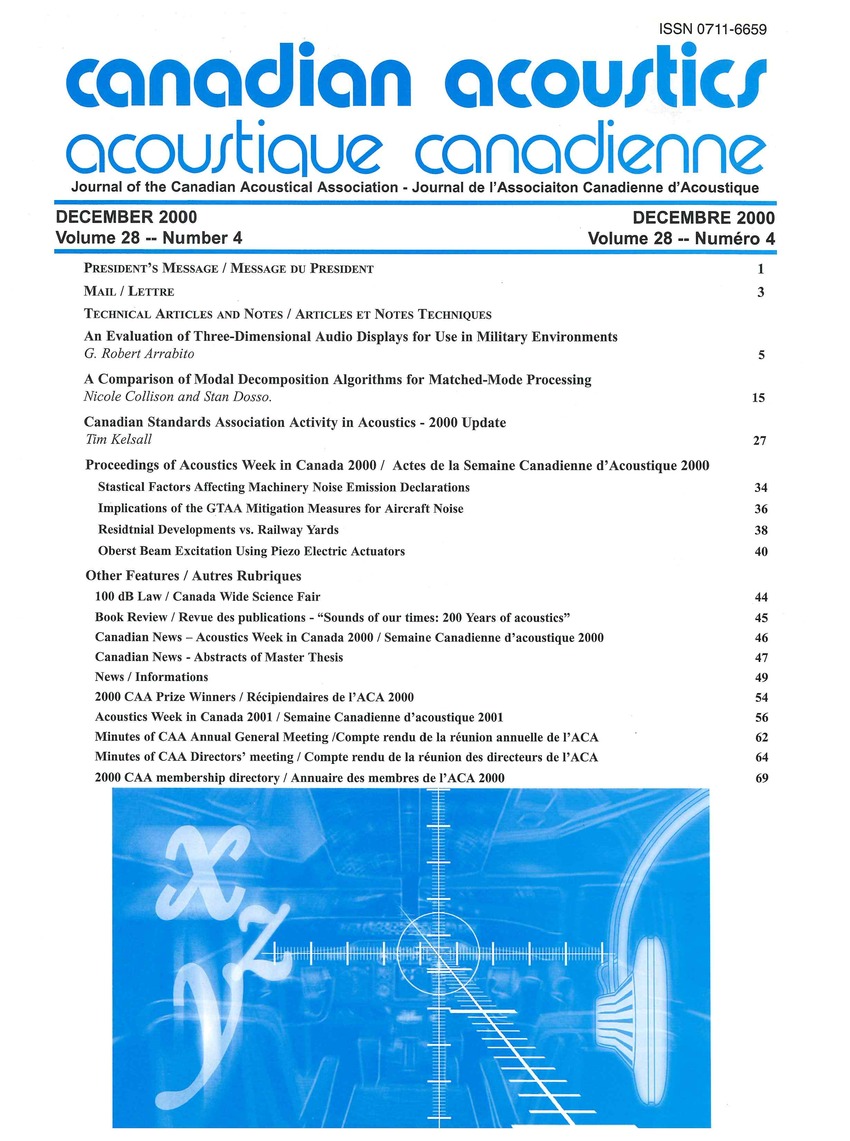Statistical Factors Affecting Machinery Noise Emission Declarations
Mots-clés :
Acoustic noise, ISO 4871, measurement of noise emissionRésumé
Occupational noise-induced hearing loss is a significant public health problem in Canada. To help reduce workplace noise, purchasers of machinery need to be able to make meaningful comparisons of machinery noise emissions with: (i)emissions from other machines, (ii)purchase specifications and (iii)occupational noise limits. This can be achieved if technical specifications and instruction manuals for machinery contain noise emission declarations; realistic, but conservative, estimates of the sound pressure levels and sound power levels emitted by machine(s) under standard conditions. Guidelines for machinery noise emission declarations in Canada are being prepared by the Canadian Standards Association (CSA). They are based, in part, on ISO 4871, one of a series of international standards that can be used as an efficient way to either meet European regulatory requirements for noise emission declarations or to verify declarations. he purpose of this study was to examine the implications of using ISO 4871 for the declaration and verification of the noise emission values of machinery manufactured in batches. For measurement of noise emission values to be feasible, the values must be based on measurements of a relatively small sample of machines from the batch. From health and safety considerations, it is important that there be a reasonably high probability that the noise emission value of machinery purchased for a workplace will not exceed the declared value. For the benefit of the manufacturer, there should also be a relatively high probability that a noise emission declaration for a batch will be verified, either by a purchaser or a regulatory authority. Therefore, this study examined the dependence of these probabilities on three factors: (i) the number of machines used to determine a noise emission declaration, (ii) reproducibility of the measurements and (iii) the difference between the total standard deviation and the reference standard deviation of the measurements.Fichiers supplémentaires
Publié-e
Comment citer
Numéro
Rubrique
Licence
Author Licensing Addendum
This Licensing Addendum ("Addendum") is entered into between the undersigned Author(s) and Canadian Acoustics journal published by the Canadian Acoustical Association (hereinafter referred to as the "Publisher"). The Author(s) and the Publisher agree as follows:
-
Retained Rights: The Author(s) retain(s) the following rights:
- The right to reproduce, distribute, and publicly display the Work on the Author's personal website or the website of the Author's institution.
- The right to use the Work in the Author's teaching activities and presentations.
- The right to include the Work in a compilation for the Author's personal use, not for sale.
-
Grant of License: The Author(s) grant(s) to the Publisher a worldwide exclusive license to publish, reproduce, distribute, and display the Work in Canadian Acoustics and any other formats and media deemed appropriate by the Publisher.
-
Attribution: The Publisher agrees to include proper attribution to the Author(s) in all publications and reproductions of the Work.
-
No Conflict: This Addendum is intended to be in harmony with, and not in conflict with, the terms and conditions of the original agreement entered into between the Author(s) and the Publisher.
-
Copyright Clause: Copyright on articles is held by the Author(s). The corresponding Author has the right to grant on behalf of all Authors and does grant on behalf of all Authors, a worldwide exclusive license to the Publisher and its licensees in perpetuity, in all forms, formats, and media (whether known now or created in the future), including but not limited to the rights to publish, reproduce, distribute, display, store, translate, create adaptations, reprints, include within collections, and create summaries, extracts, and/or abstracts of the Contribution.


